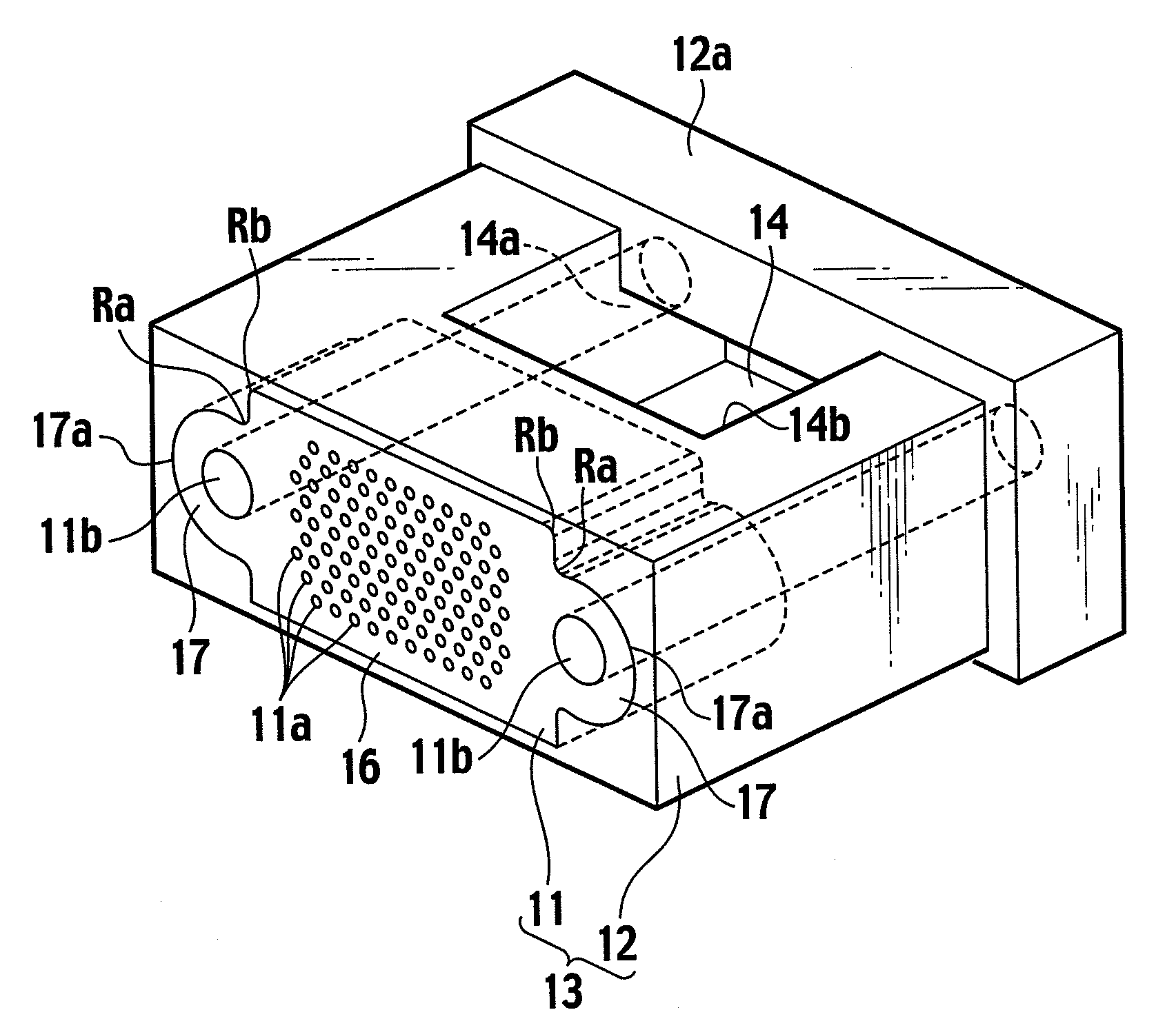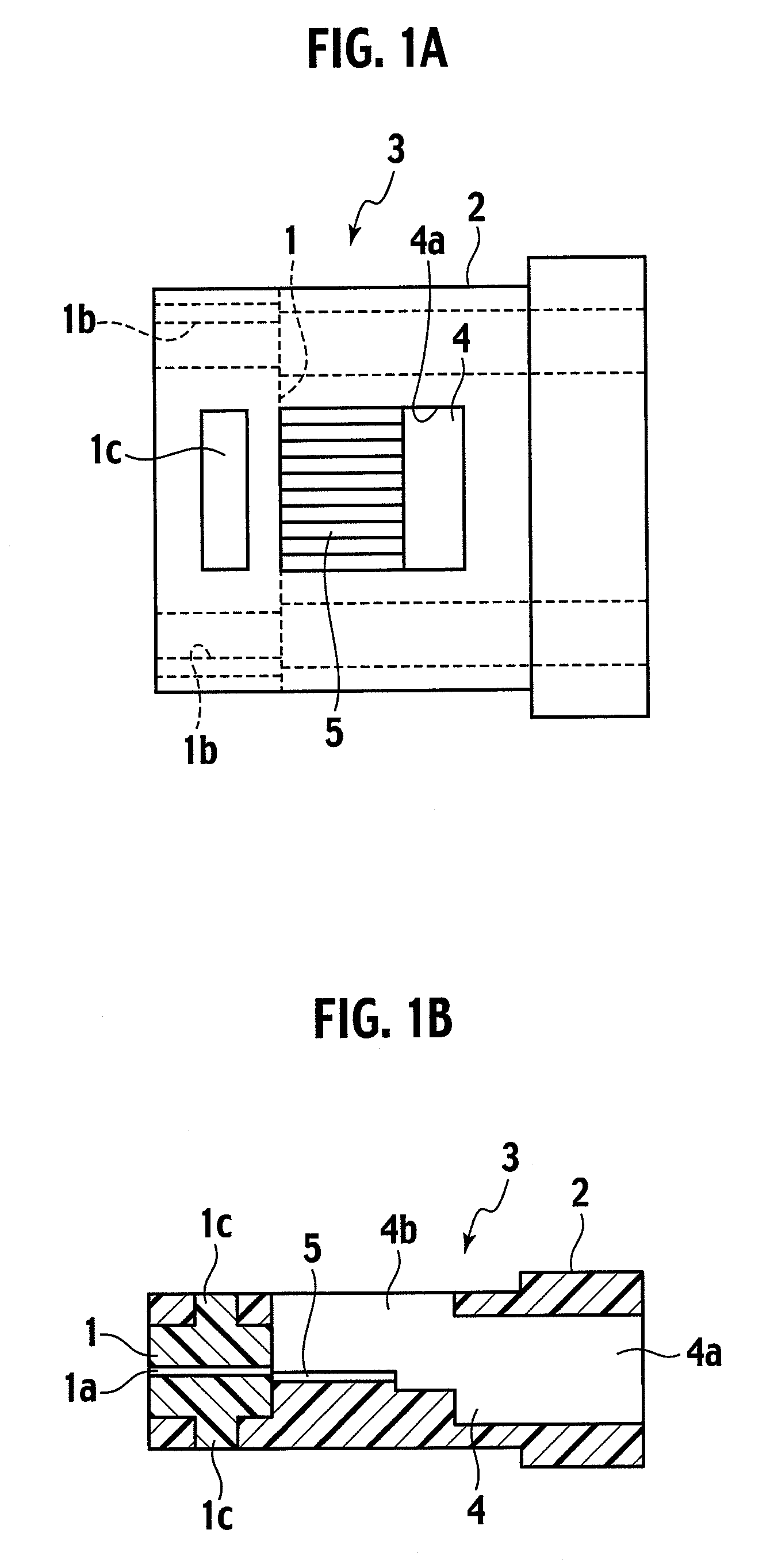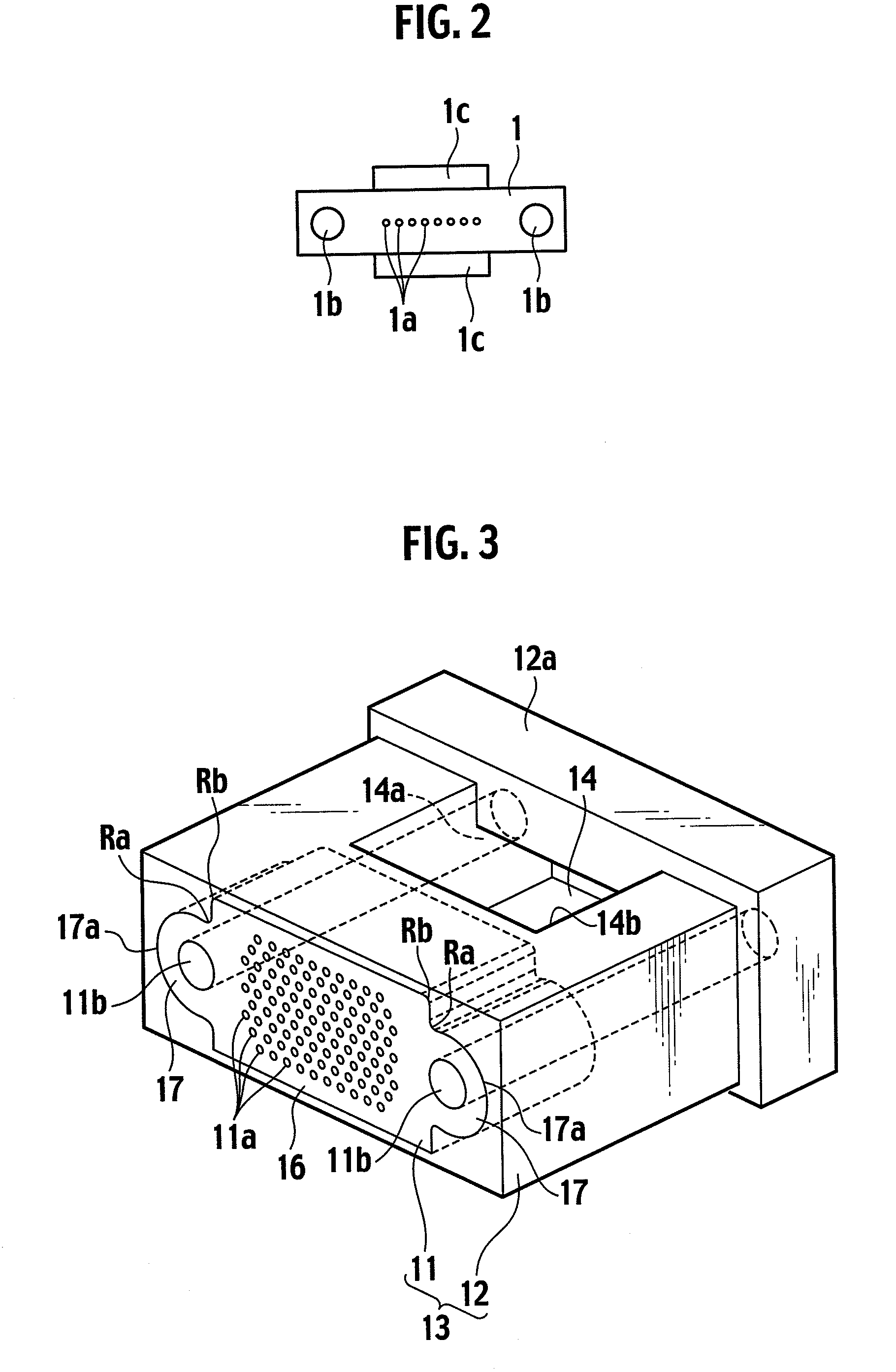Optical ferrule and manufacturing method thereof
- Summary
- Abstract
- Description
- Claims
- Application Information
AI Technical Summary
Benefits of technology
Problems solved by technology
Method used
Image
Examples
first embodiment
[0031]As shown in FIG. 3, an optical ferrule 13 according to an embodiment of the present invention is formed of a positioning block 11 and a ferrule main body 12 formed by molding a resin over the positioning block 11 with resin.
[0032]Note that, in the following description, a connection end face side of the optical ferrule is called a front side, an opposite side is called a rear side, an end face on the front side is called a front end face, and an end face on the opposite side is called a rear end face. A vertical direction approximately indicates a vertical direction on the page in FIGS. 3 and 4, and a horizontal direction approximately indicates a horizontal direction on the page in FIGS. 3, 4 and 6.
[0033]The positioning block 11 is a resin-molded component. The positioning block 11 has a plurality of optical fiber insertion holes 11a and guide pin holes (also called fitting pin holes) 11b formed on both sides of a region where the optical fiber insertion holes 11a are formed....
second embodiment
[0073]FIG. 7 is a perspective view showing an optical ferrule 23 according to another embodiment of the present invention. FIG. 8 is a longitudinal cross-sectional view of the optical ferrule shown in FIG. 7.
[0074]The optical ferrule 23 according to a second embodiment of the present invention includes a positioning block 21 and a ferrule main body 22 formed by molding a resin over the positioning block 21. The positioning block 21 includes: an optical fiber insertion hole formation portion 26 having a plurality of optical fiber insertion holes 21a arranged in a row; and guide pin hole formation portions 27 which are positioned on both sides of the optical fiber insertion hole formation portion 26 and which have guide pin holes 21b. However, the number of rows of the optical fiber insertion holes is not limited to 1.
[0075]The positioning block 21 is formed by molding a resin. The positioning block 21 has a cross-sectional shape uniform in a front-back direction (approximately horizo...
PUM
 Login to View More
Login to View More Abstract
Description
Claims
Application Information
 Login to View More
Login to View More - R&D
- Intellectual Property
- Life Sciences
- Materials
- Tech Scout
- Unparalleled Data Quality
- Higher Quality Content
- 60% Fewer Hallucinations
Browse by: Latest US Patents, China's latest patents, Technical Efficacy Thesaurus, Application Domain, Technology Topic, Popular Technical Reports.
© 2025 PatSnap. All rights reserved.Legal|Privacy policy|Modern Slavery Act Transparency Statement|Sitemap|About US| Contact US: help@patsnap.com



